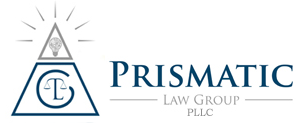Author: Ron J. Kamis
This post discussing the Patent Office’s examination policy regarding biotechnology and chemical inventions following the recent Supreme Court Myriad decision.
As many of you already know, on March 4, 2014, the United States Patent and Trademark Office (PTO) issued guidelines to its examiners (the Guidelines) following the Supreme Court’s 2013 Myriad decision (Association for Molecular Pathology v. Myriad Genetics, Inc., 569 U.S. _, 133 S. Ct. 2107, 2116, 106 USPQ2d 1972 (2013)). On April 16, 2014 and on May 9, 2014 the PTO held meetings discussing the Guidelines with the public.
I attended both these meetings and have the following thoughts, which hopefully you will find helpful. Perhaps the most important message from the meetings is that the new Myriad 101 rejections will extend well beyond the DNA gene claims that were invalidated in Myriad. The Guidelines apparently will apply to several technologies one might have expected, e.g., nucleotide probes and primers, peptides, stem cells and isolated or purified biological products (e.g., cytokines, peptide hormones, etc.). Apparently the new rejections will also apply to several completely unexpected technologies, inter alia, antibodies, industrial enzymes, vaccines and diagnostic assays. Moreover, unexpectedly, the Guidelines apply to combinations of components and one should expect, in my view, rejections of nucleotide and antibody multiplex diagnostic claims. Apparently, this combination-type rejection is already being applied to vaccine claims.
Another important message from the meetings is that the PTO intends to keep the Guidelines in place while it reviews public comment and decides whether the Guidelines should be revised. This means that applicants should expect a significant increase in prosecution costs in responding to these new rejections. Applicants also should expect that many of these rejections will need to be interviewed with SPEs and appeal briefs and pre-appeal requests will need to be filed, while examiners have the unenviable job of applying the guidelines to fact-specific cases.
The third and most obvious take-home from the meetings is that difficult times are ahead for biotechnology and chemistry patent applications. Unfortunately for applicants, the confluence of two factors will significantly narrow the scope of claim coverage while the Guidelines are in place. First, functional limitations will not be considered in overcoming a Myriad 101 rejection related to a natural product unless accompanied by a substantial structural change in the natural product itself. Second, as expected, the broadest reasonable interpretation (BPI) standard will apply to Myriad 101 rejections. I expect that the combination of these two factors will lead to very difficult examination scenarios. For example, is a “pharmaceutically acceptable composition” claim limitation a sufficient ground for overcoming a natural product-based rejection, or will an applicant be faced with a BPI PTO response that water is a pharmaceutically acceptable composition, hence it is also “natural product”? Will the recitation of “a sterile composition” in a vaccine claim be considered functional (and not structural) and therefore impermissible per se in overcoming a “natural product”-based rejection? Will a fusion protein or an antibody be considered a new structure rather than a combination of naturally occurring components? Will dosage limitations for a biologic composition claim be considered impermissible non-structural limitations, or will they be necessary to transform an allegedly unpatentable “method” claims into patentable eligible subject matter?
Finally, there is the post-grant consequence of the Guidelines. Applicants will be forced to narrow claims by introducing structural recitations to overcome rejections under the Guidelines. By doing so, the intervening subject matter will be lost under the doctrine of equivalents. This is a significant consequence of the Guidelines prohibition of function limitations per se. Applicants are tasked with pulling structural elements from pre-Myriad drafted specifications, which elements are sufficiently significant under the Guidelines, but at the same time resist rudimentary design-around.
That said, I am an optimist by nature. I note that in the May 9 meeting the PTO indicated that it is considering the Office’s position that function is not pertinent to a natural product analysis according to the Guidelines. I also believe that the current political swing of the pendulum against patents, which one must assume is impacting the PTO’s 101 policy, will at some point swing back to a more moderate place. The practical consequence of this optimism is the strategic suggestion that applicants stay the course and put in place cost-sensible strategies for staging (and delaying) responses to Myriad 101 rejections while the Guidelines are hopefully fine-tuned by the PTO.
